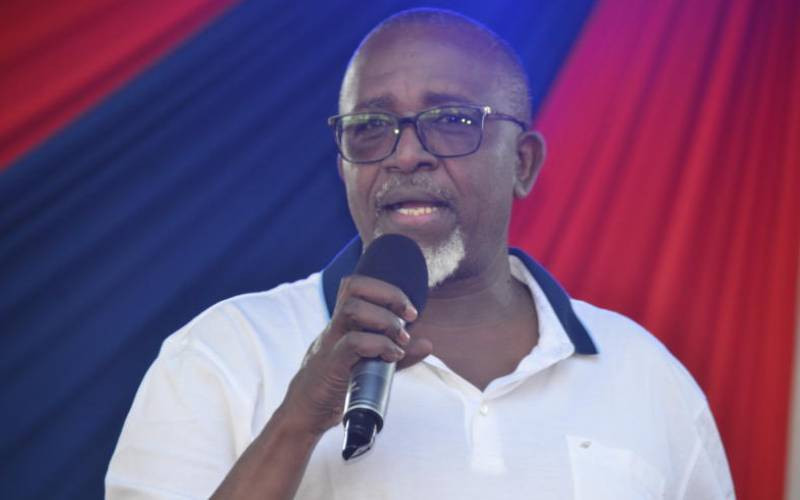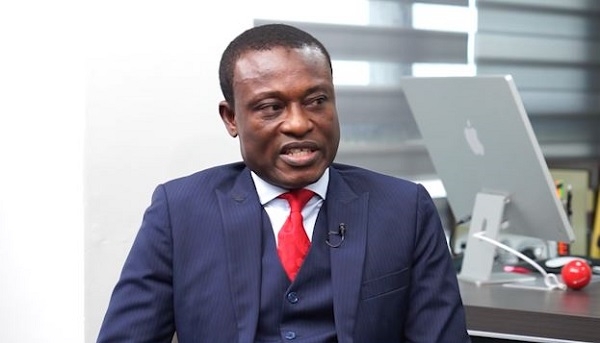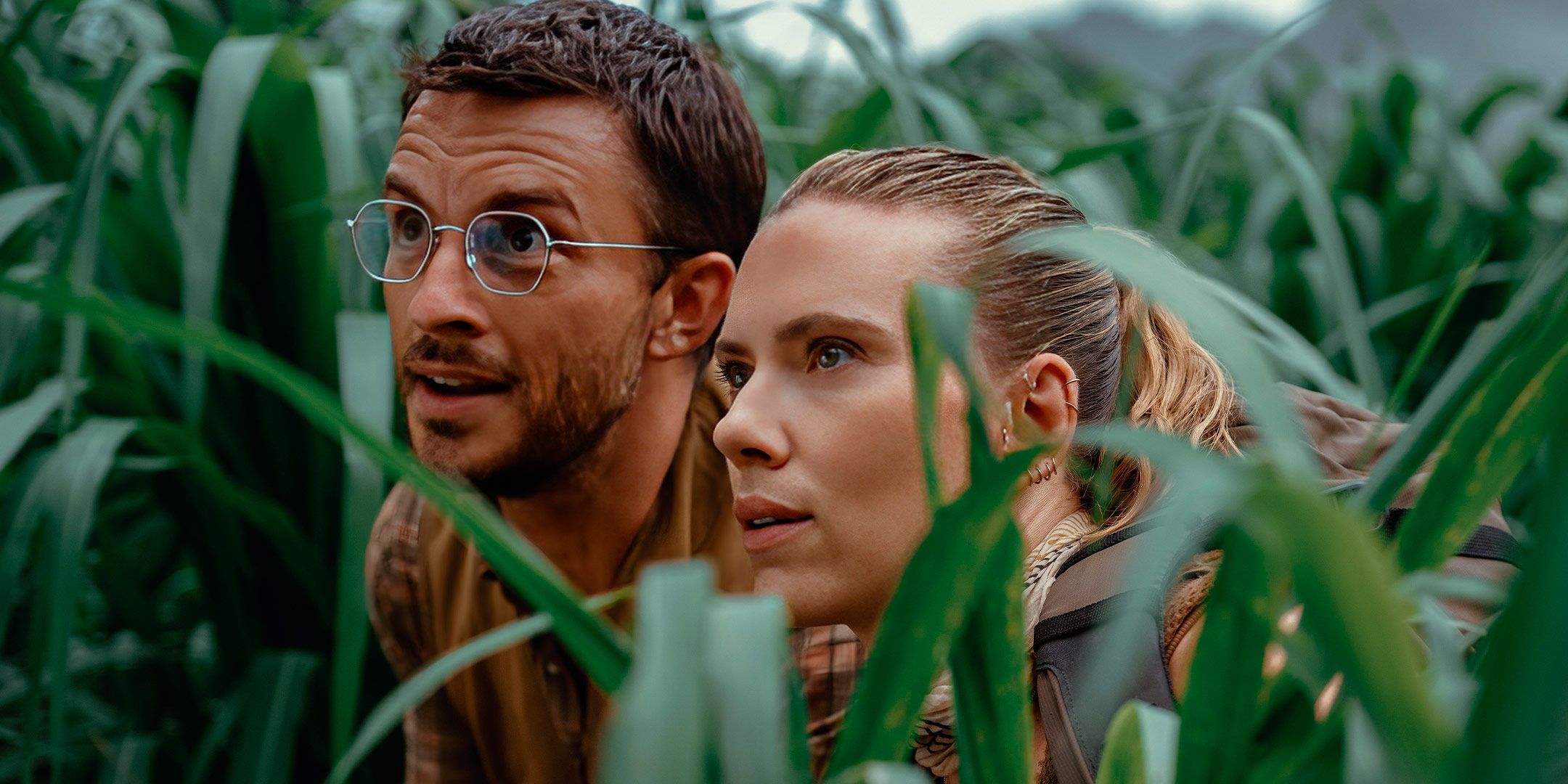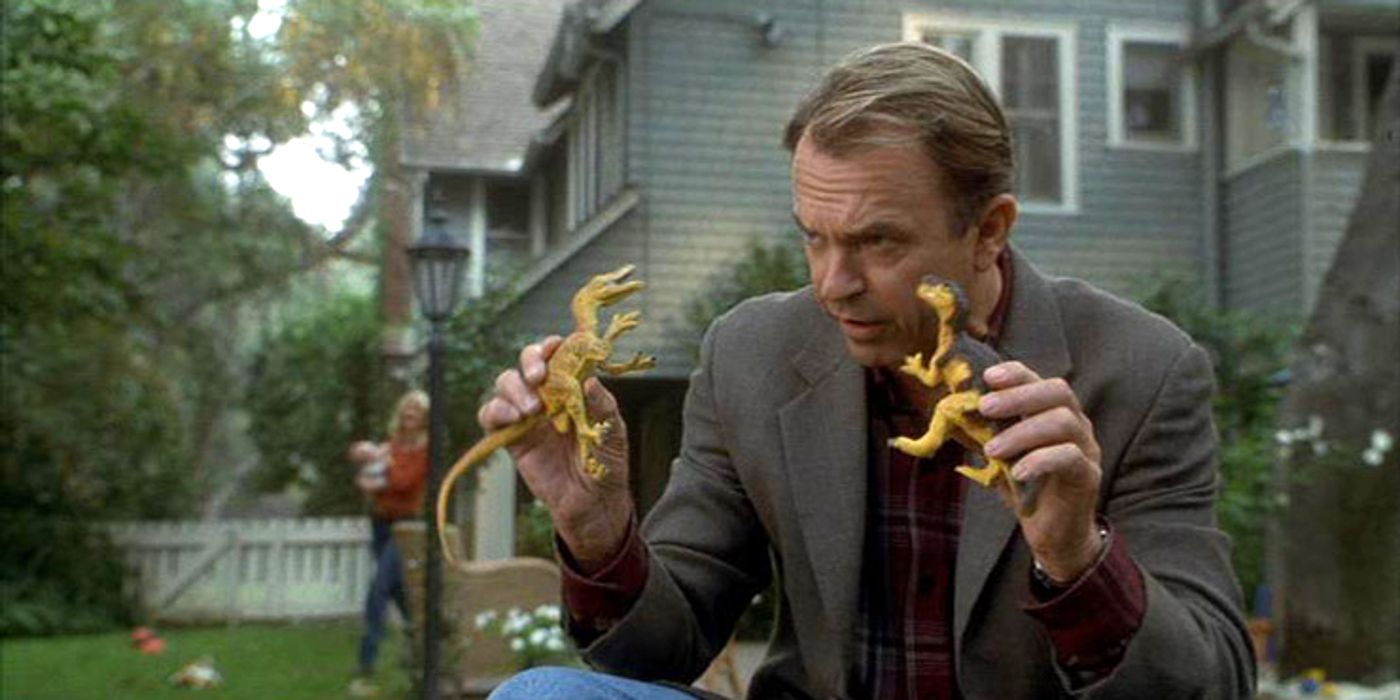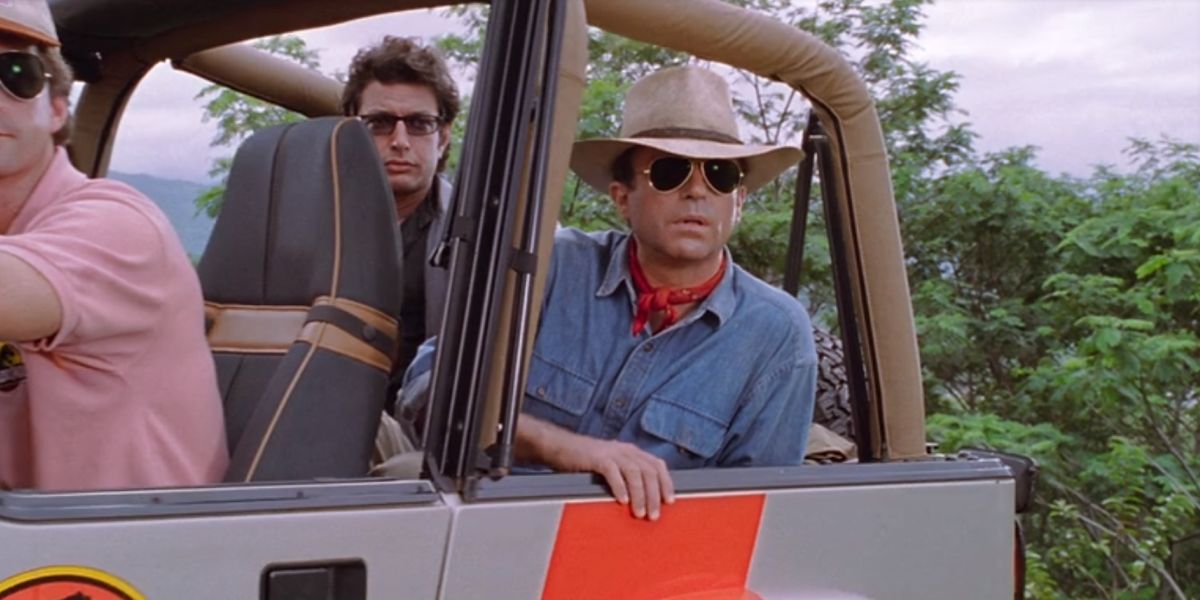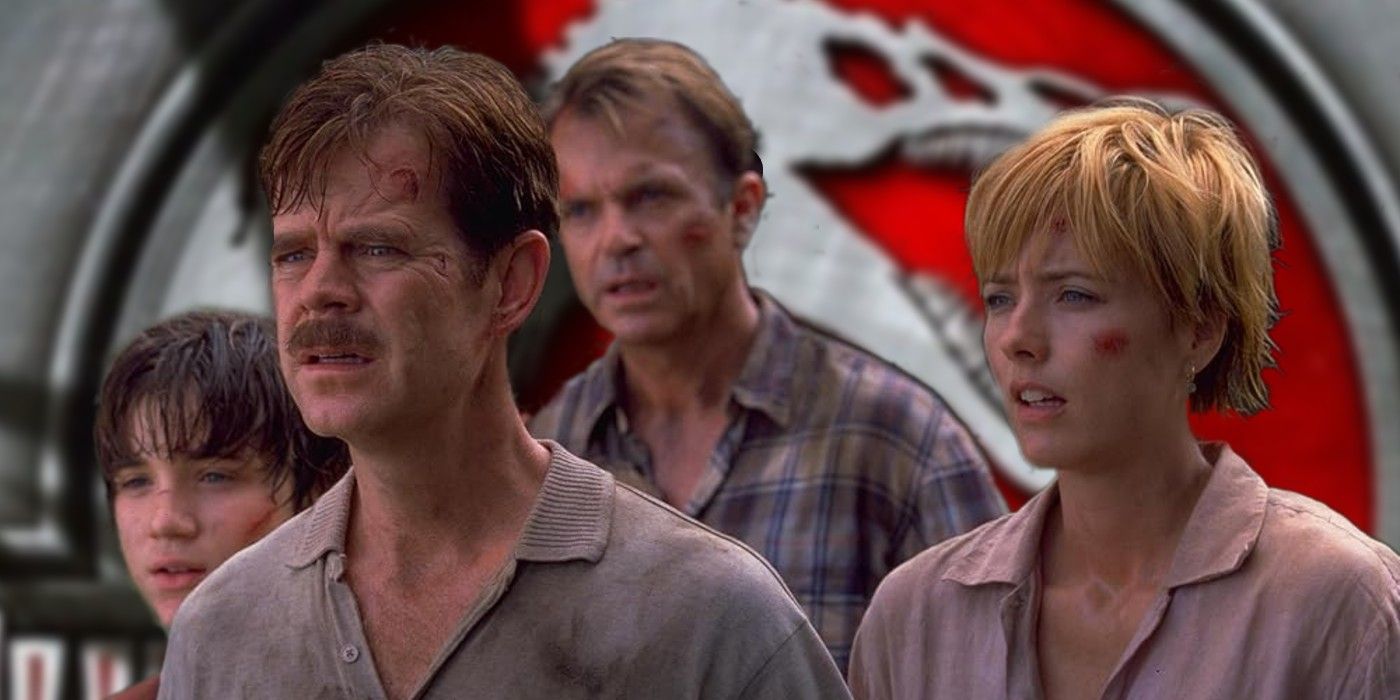All the Main Dinosaur Villains From the 'Jurassic Park' Movies Ranked Worst To Best
Many ingredients go into making a Jurassic Park movie. Some might have been lost in the more recent sequels, such as the signature sequence in which a vehicle is assaulted by a large dinosaur, but fortunately, the dinosaurs themselves haven’t gone anywhere.
Every Jurassic Park film features a main dinosaur villain (the films have their fair share of human villains, too). And now that Jurassic World Rebirth (2025) is getting closer, it’s time to look back at all the main prehistoric antagonists that have dominated the series so far.
Don’t move, run as fast as you can, or just hold onto your butts.

Giganotosaurus is the main dinosaur villain of Jurassic World Dominion (2022). The super-sized predator, dubbed in the film by Alan Grant (Sam Neill) as “the biggest carnivore the world has ever seen,” was bigger than T-Rex, and it looks absolutely terrifying in the latest Jurassic sequel, from its appearance in the film’s prologue (set 65 million years ago) to its present-day counterpart that dominates the forests of Biosyn Valley.
Unfortunately, while the Cretaceous Period-set prologue establishes the “Giga” as the main toothy villain of the 2022 blockbuster, the version we see throughout the rest of the film–in the modern day–does very little to leave an impact. Not only is the dinosaur inexplicably slow when facing the film’s eight lead characters, it’s third-act showdown against the original T-Rex and the Therizinosaurus feels unjustified because the Giga hasn’t even killed anyone!

Second from the bottom is Allosaurus, the almost-as-big-as-a-T-Rex super predator as seen in the short film, Battle at Big Rock (2019), which was directed by Colin Trevorrow and released online in 2019. The eight-minute snapshot into life on mainland North America one year after dinosaurs escaped from Lockwood Manor, as seen in Jurassic World: Fallen Kingdom (2018), features the Late Jurassic beast as the main antagonist.
After following a family of Nasutoceratops into a campsite, the Allosaur turns its attention to an unsuspecting family inside an RV. It’s thrilling to see a big predator take on a sizable vehicle as it echoes the earlier films in the franchise. And the part in which the dinosaur is squeezing its jaws through the trailer towards a trapped toddler is nail-biting to say the least. But, if we’re being honest, there are far more effective predators that trump this dino.
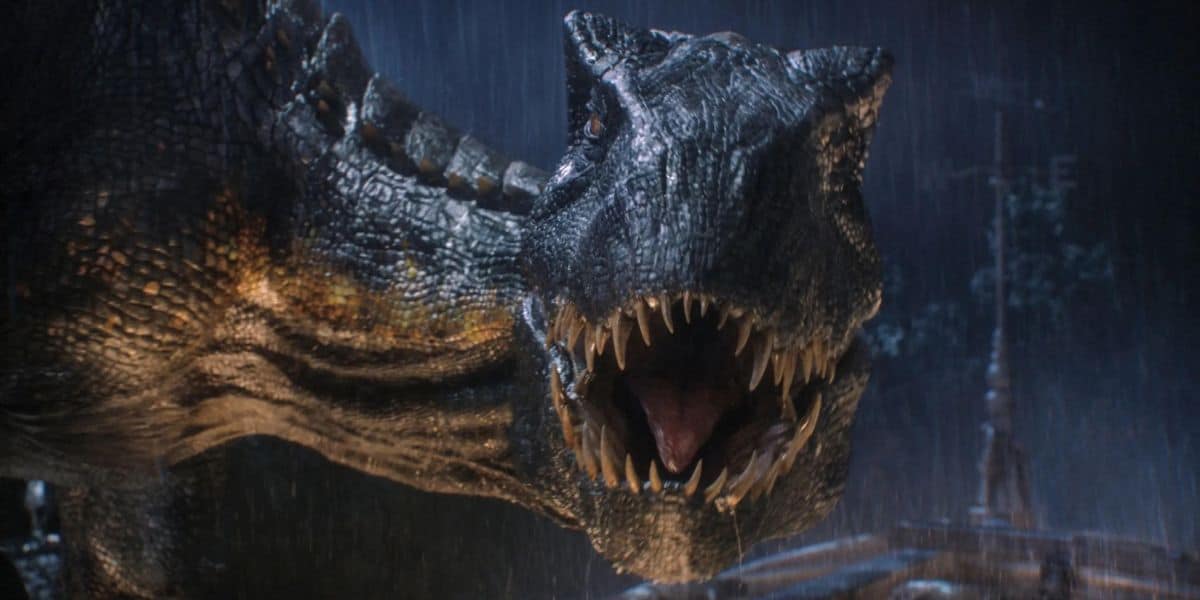
The Indoraptor gets a pretty hard time from many Jurassic fans. There’s no denying that the dinosaur hybrid is criminally underused in the 2018 sequel, Jurassic World: Fallen Kingdom, in which it stalks Owen Grady (Chris Pratt) and Bryce Dallas Howard (Claire Dearing) through the dimly lit corridors of the gothic-esque Lockwood Manor.
But there’s also no denying that the creature boasts one of the sleekest and scariest dinosaur designs in the entire series. With that said, the creature as a whole makes very little sense.
In the 2018 film, it’s said that the “weaponized” Indoraptor can follow a guided laser to attack its prey, but if someone already has their sights on a target, then isn’t the dinosaur itself completely redundant? Well, the Indoraptor is still terrifying, even if it does smile at one point during the film (one of many scenes throughout the series that fans hate) and isn’t actually trying to kill the young human clone character, Maisie Lockwood (Isabella Sermon).

Mosasaurus is, in many ways, the true mascot of Jurassic World, and it even has the best money-shot of the entire film, in a scene that cleverly mocks Steven Spielberg’s classic horror film, Jaws (1975). The thought of such a gargantuan monster gliding beneath the murky surface of the water is the stuff of nightmares, and the Late Cretaceous predator is definitely among the scariest in the series — it even has the most nightmarish appearances.
In just two movies — Jurassic World (2015) and Jurassic World: Fallen Kingdom — we’ve seen the Mosasaur bite a Great White Shark in half, swallow a Pterosaur whole, kill the Indominus Rex, and even make attempts to bring down a helicopter. Now, the beast of the deep is free to explore the deep blue sea, and the creature is making an epic comeback in the upcoming film, Jurassic World Rebirth, in which it teams up with a pack of Spinosaurs!

Many fans criticized Jurassic World for its use of a dinosaur hybrid, however, around the time of the film’s release, director Colin Trevorrow pointed out that the Indominus Rex was the only way he could justify making the film in the first place, as it was an opportunity to bring yet another dinosaur-filled theme park to its knees.
In the film, the creature is also used to provide some clever “meta” commentary on how the titular theme park is having to up its game with dino-hybrids in a bid to increase crowd attendance, in the same way the filmmakers are introducing them into the series itself.
What we love about the Indominus is that, even though it’s a hybrid, we don’t get a dinosaur that is a literal mish-mash of many things.
Created by Henry Wu (BD Wong), she might be made up of T-Rex, Velociraptor, and some modern-day reptiles, but you wouldn’t know to look at her — she has a pretty standardized dinosaur look but with an indistinguishable design from other dinosaurs of her size. But what really makes this dinosaur awesome is how she has inherited attributes from all her genetic donors, such as the ability to camouflage and evade infrared detection.

There are a plenty of things in Jurassic Park III (2001) that make very little sense, but fortunately, Pteranadon isn’t one of them. In fact, one of the best sequences in the film is when Alan Grant (Sam Neill), Amanda Kirby (Téa Leoni), Paul Kirby (William H Macy), Eric Kirby (Trevor Morgan), and Billy Brennan (Alessandro Nivola) stumble into a giant aviary on Isla Sorna/Site B, where they’re attacked by an entire flock of the prehistoric birds.
Though we did get to see one of the prehistoric winged reptiles just before the credits roll in The Lost World: Jurassic Park (1997), the third entry in the series marks their official introduction. Not only do they sport a pretty menacing design, but they’re a force to be reckoned with, because no matter where the characters hide, whether it’s inside a caged tunnel or in the water, there’s no escaping these winged monsters of the sky.

Jurassic Park III is one of the most disliked sequels in the series (alongside Fallen Kingdom and Dominion), but that doesn’t mean it doesn’t get a fair few things right in its short runtime. If anything, it’s wildly entertaining and barely takes a moment to breathe. But where its dinosaurs are concerned, besides the aviary sequence, its best asset is easily the fan-favorite Spinosaurus, a Late Cretaceous super-predator that rivals T-Rex in size.
In fact, this comparison is put on show as the two fight it out surprisingly early on in the film. It’s a Jurassic dino-battle that, even to this day, is a bone of contention for many fans. Nevertheless, it’s a well-shot scene, even if it is painfully short-lived (no pun intended). The Spino’s design is also visually stunning, and in hindsight, it’s refreshing to see that the 2001 threequel changed things up a little where the main dinosaur villain was concerned.

Alongside T-Rex, Velociraptor is the most recurring dinosaur in the Jurassic Park series, but their portrayals vary from to film. In Jurassic Park (1993), they’re highly-intelligent hunters that are impossible to survive once they get their retractable claws on you. The Lost World’s versions are scavengers, while Jurassic Park III’s are evolved communicators.
In the Jurassic World movies, however, they’re more anthropomorphic (but dangerous nonetheless), with Blue essentially being the pet of Owen Grady. As such, third place is reserved for the raptors of the 1993 film. If any scene demonstrates the sheer brutality of these pack hunters, it’s the one in which game warden Robert Muldoon (Bob Peck) is killed.
The kitchen scene with Lex (Ariana Richards) and Tim (Joe Mazzello) is also the stuff nightmares are made of.

Tyrannosaurus Rex might be the king of the dinosaurs, but as far as our list is concerned, this dinosaur only gets second place. Nevertheless, it’s still a proud crown to wear, and T-Rex plays the main dinosaur villain exceptionally well in the first two Jurassic Park movies.
In the original, she’s a truly terrifying animal; in The Lost World, we get two of them (much to the dismay of Eddie Carr, of course), and seeing the original T-Rex (“Rexy”, as she’s affectionately referred to by fans) make a triumphant return in Jurassic World is awesome.

While as beautiful as a tropical flower, with its impressive neck frills, Dilophosaurus remains one of Jurassic Park’s deadliest additions. Its hooting gives the impression of a bird of prey, but its venomous spit reminds you that this is no owl. In the original film, Dennis Nedry (Wayne Knight) meets a sticky end (pun intended) when a Dilophosaur climbs into his jeep.
Impressively, Dilophosaurus is the only dinosaur in the Jurassic series that’s entirely animatronic (the same goes for its epic return in Jurassic World Dominion). Fans will also be thrilled to know that she’s set to return once again in Jurassic World Rebirth.
Jurassic World Rebirth releases in theaters on July 2. The film stars Scarlett Johansson (Avengers: Endgame), Jonathan Bailey (Bridgerton), Manuel Garcia-Rulfo (The Lincoln Lawyer), Rupert Friend (Obi-Wan Kenobi), Mahershala Ali (The Green Book), Luna Blaise (Manifest), David Iacono (Dead Boy Detectives), Audrina Miranda (Lopez vs Lopez), Philippine Velge (Station Eleven), Bechir Sylvain (BMF), and Ed Skrein (Deadpool).
Watch the trailer below:
The film has confirmed the appearance of many terrifying dinosaurs, including T-Rex, Spinosaurus, Mosasaurus, Quetzalcoatlus, and even a mutant dinosaur.



